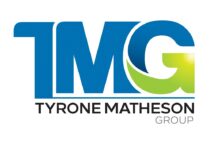
Introduction:
Efficiency and effectiveness are paramount in today’s competitive business landscape. To thrive and grow, businesses must continuously improve their operations, align their processes with strategic goals, and leverage technology and analytics. This blog post explores critical strategies for optimizing processes, aligning them with business objectives, and gaining a competitive edge through innovation and integration.Streamlining operations is the foundation of maximizing efficiency. By identifying and eliminating bottlenecks, businesses can improve workflow and resource allocation. This involves implementing Lean principles, reevaluating task flows, and leveraging automation. The goal is to ensure that processes are efficient, cost-effective, and aligned with the organization’s goals.
Aligning key strategic processes with business goals is essential for success. Mapping out core processes and ensuring they contribute to overall objectives enhances focus and decision-making. This alignment requires regular review and adjustment to remain relevant and effective in a dynamic business environment.Process optimization is crucial for maintaining a competitive edge. Continuous improvement and the integration of technology are critical factors in staying ahead. By leveraging technology and analytics, businesses can gain valuable insights into process performance and customer behavior, enabling them to make informed decisions and drive growth.
Integration across departments is another critical aspect of leveraging processes for efficiency. Breaking down silos and fostering collaboration ensures consistency and enhances communication within the organization. This integration enables businesses to streamline processes and improve overall performance.Scalability planning is vital for adapting processes to accommodate growth. By planning and designing scalable processes, businesses can ensure they can handle increased demand without sacrificing quality or efficiency. This flexibility is essential for remaining competitive in a rapidly evolving market.Efficiency through strategic process implementation involves training employees and monitoring performance.
This ensures that processes are executed effectively and deliver the desired results. By providing ongoing training and monitoring, businesses can improve efficiency, reduce costs, and enhance overall performance.Utilizing analytics provides a strategic advantage by gaining insights into process mapping and customer behavior. This data-driven approach enables businesses to make informed decisions and stay ahead of the curve. By leveraging analytics, companies can outperform competitors and drive business growth.Effective process management ensures compliance with best practices and drives continuous improvement. Businesses can reduce errors and improve overall performance by establishing clear ownership of processes and ensuring compliance.
This involves regular review and adjustment of processes to ensure they remain efficient and effective.Maximizing strategies with tactical processes involves aligning tactics with strategic processes and iterating based on feedback. This iterative approach ensures that tactics are continuously optimized for maximum effectiveness. By aligning tactics with strategic processes, businesses can maximize their impact and drive success.
Streamlining Operations: Maximizing Efficiency Strategic Process Optimization
Streamlining operations is essential for maximizing efficiency and reducing waste. Businesses can improve workflow and resource allocation by identifying bottlenecks and implementing Lean principles. This can involve reevaluating the flow of tasks, eliminating redundant steps, and optimizing resource use. Implementing automation where appropriate can also lead to significant efficiency gains. Regularly reviewing and updating processes ensures they remain efficient and aligned with business goals.To streamline operations effectively, businesses should first conduct a thorough analysis of their current processes. This involves identifying inefficiencies, such as unnecessary steps or redundant tasks, and determining the root causes of these issues. Once the bottlenecks are identified, businesses can develop and implement solutions. This might involve redesigning processes, providing additional employee training, or investing in new technologies.Continuous improvement is critical to maintaining efficient operations over time. Businesses should regularly review their processes and performance metrics to identify areas for improvement. Companies can continually seek ways to streamline operations to increase efficiency, reduce costs, and improve overall performance.
Key Strategic Processes: Aligning with Goals Strategic Process Optimization
Mapping core processes and aligning them with business goals ensures that every action contributes to the overall objectives. This alignment enhances focus and improves decision-making processes. Businesses should regularly review their strategic processes to ensure they are aligned with the current goals and make adjustments as necessary. This can involve realigning priorities, updating processes to reflect changes in the market, or identifying new growth opportunities.To align strategic processes with business goals, businesses should clearly define their objectives.
This involves setting specific, measurable, achievable, relevant, and time-bound (SMART) goals aligning with the organization’s mission and vision. Once the goals are established, businesses can map out the processes needed to achieve them. This might involve identifying key milestones, allocating resources, and assigning responsibilities to team members.Regular monitoring and evaluation are essential to ensure strategic processes align with business goals. Businesses should regularly review their progress toward achieving their goals and adjust their processes as necessary. By continually aligning strategic processes with business goals, companies can ensure that they are focused on activities that drive growth and success.
Process Optimization for Competitive Edge: Integrating Technology Strategic Process Optimization
Continuous improvement and technology integration are vital for maintaining a competitive edge. Businesses must constantly evaluate and optimize their processes to stay ahead of the competition. This can involve adopting new technologies that streamline operations, such as project management software or customer relationship management systems. Regularly reviewing and updating processes ensures they remain efficient and aligned with business goals.Technology plays a crucial role in process optimization by automating repetitive tasks, providing real-time data for decision-making, and improving collaboration among team members.
Businesses should invest in technologies aligned with their strategic goals that can help them gain a competitive edge in the market. Additionally, companies should regularly assess the effectiveness of their technology solutions and make adjustments as necessary to ensure they continue to meet their needs.By integrating technology into their processes, businesses can improve efficiency, reduce costs, and enhance competitiveness. Technology can also enable businesses to innovate and develop new products or services, further strengthening their competitive position in the market.
Leveraging Processes: Integration Across Departments
Leveraging processes involves integrating them across departments to ensure consistency and efficiency. This integration enhances collaboration and communication within the organization. By breaking down silos and fostering cross-functional collaboration, businesses can streamline processes and improve overall performance.Integration across departments requires clear communication channels and a shared understanding of goals and objectives.
Businesses should establish cross-functional teams to oversee the integration process and ensure all departments are aligned. Regular meetings and progress updates help keep everyone on the same page and identify any issues that must be addressed.By leveraging processes across departments, businesses can improve efficiency, reduce duplication of efforts, and enhance the overall customer experience. This integrated approach can also lead to innovation and the development of new products or services that meet customers’ needs across the organization.
Strategic Business Growth: Scalability Planning
Scalability planning is crucial for adapting processes to accommodate growth. By planning ahead, businesses can ensure that their processes can scale effectively as they expand. This involves anticipating future growth and designing processes to handle increased demand without sacrificing quality or efficiency.Scalability planning requires a deep understanding of the business’s goals, market conditions, and potential challenges. Businesses should regularly review their scalability plans and make adjustments as necessary to ensure they remain relevant and practical.
This might involve investing in new technologies, expanding infrastructure, or hiring additional staff.Businesses can position themselves for long-term success and growth by planning for scalability. Scalable processes enable businesses to adapt to changing market conditions and seize new opportunities. This flexibility is essential for remaining competitive in today’s fast-paced business environment.
Efficiency through Strategic Process Implementation: Training and Monitoring
Efficiency is achieved through strategic process implementation, which involves training employees on strategic processes and monitoring performance. This ensures that processes are executed effectively and deliver the desired results. Training employees on strategic processes helps them understand their roles and responsibilities and perform their tasks efficiently.Monitoring performance allows businesses to identify any issues or bottlenecks affecting efficiency and take corrective action.
This might involve providing additional training, reallocating resources, or redesigning processes. Regular monitoring and feedback are essential for maintaining efficiency over time and ensuring that processes continue to deliver the desired results.Businesses can improve efficiency, reduce costs, and enhance overall performance by implementing strategic Partnerships and providing ongoing training and monitoring. This continuous improvement approach is essential for remaining competitive in today’s dynamic business environment.
Strategic Advantage: Utilizing Analytics
Gaining a strategic advantage involves utilizing analytics to gain insights into process performance and customer behavior. This data-driven approach enables businesses to make informed decisions and stay ahead of the curve. By analyzing data from various sources, companies can identify trends, predict future outcomes, and develop strategies to capitalize on opportunities.Analytics can provide valuable insights into customer preferences, market trends, and competitor strategies. Businesses can use this information to tailor their processes and offerings to meet customer needs better and differentiate themselves from competitors. Additionally, analytics can help companies identify areas for improvement and optimize their processes for maximum efficiency and effectiveness.By leveraging analytics, businesses can gain a strategic advantage that enables them to outperform competitors and drive business growth. By using data-driven insights to inform decision-making, companies can make more intelligent choices that increase profitability and long-term success.

Effective Process Management: Ensuring Compliance
Effective process management involves establishing clear ownership of processes and ensuring compliance with best practices. This ensures that processes are followed consistently and deliver the desired results. By defining clear roles and responsibilities, businesses can ensure that everyone understands their role in the process and can perform their tasks effectively.Ensuring compliance with best practices involves regularly reviewing processes and performance metrics to identify deviations from the standard.
This might include conducting audits, providing additional training, or implementing new procedures. By ensuring that processes comply with best practices, businesses can reduce the risk of errors and improve overall performance.Effective process management also involves continuous improvement and innovation. Businesses should regularly review their processes and seek ways to make them more efficient and effective. By continuously striving for improvement, companies can stay ahead of the competition and drive business growth.
FAQs
1. How can businesses identify bottlenecks in their processes?
Businesses can identify bottlenecks by analyzing performance metrics and conducting process audits.
2. What role does technology play in process optimization?
Technology is crucial in process optimization, as it automates repetitive tasks, provides real-time data insights, and improves communication and collaboration.
3. How can businesses ensure their processes comply with best practices?
Businesses can ensure compliance with best practices by regularly reviewing and updating their processes, providing ongoing employee training, and implementing robust quality control measures.
Conclusion
In conclusion, Strategic Process Optimization for Growth is essential for businesses looking to achieve sustainable growth and maintain a competitive edge in today’s market. By focusing on streamlining operations, implementing vital strategic processes, and optimizing processes for efficiency, businesses can position themselves for long-term success.
By embracing strategic process optimization, businesses can unlock new opportunities for growth and innovation, set themselves apart from the competition, and ensure their long-term success.
Are you ready to turn the assets in and around your business into money? Let’s Talk!
